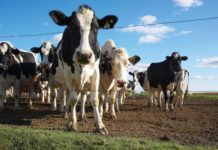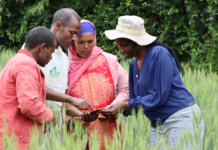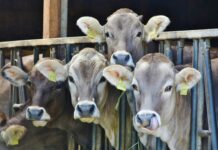Hundreds of years ago, long before the dawn and large-scale adoption of mechanized farming, the world depended on manual labor for agricultural processes. It was thus no surprise that food production was limited. Moreover, as the world population gradually increased, scarcities were bound to crop up.
Fast forward centuries later and the technological revolution has seen farmers switch to a more mechanized system of operations. This, in turn, has significantly increased the possibilities of farming. Additionally, technology is now at the core of modern agricultural practices that evolves with the sector towards the exploitation of burgeoning effectiveness.
Every new form of technological advancement has since resulted in the development of better agricultural solutions to preexisting challenges.
For instance, agriculture technology is providing a much-needed lifeline to remedy developing countries riddled with unchecked desertification, crop pests and diseases and a persistent lack of infrastructure. Countries like Nigeria and India already have working irrigation systems that mitigate the effects of drought. On the other hand, genetic engineering in combination with improved pest management systems has significantly reduced the impacts of pests on crop yield. This has in turn led to the production of better and more desirable farm produce.
Farmers across Africa are also being sensitized on the internet of things and are conversely using these technologies to better their production and distribution capabilities. In Kenya and Nigeria, tech startup Hello Tractor is allowing smallholder farmers to rent tractors at favorable rates using just their mobile phones. Mobile technology itself has become quite the universal tool for farmers to derive valuable information about crop handling, weather forecasts and agriculturally related policies. This is while also helping them connect to financial solutions and other farmers and traders alike.
Technology has also led to the development of more efficient methods of undertaking agricultural practices. Mechanized farming, for instance, is not too common in developed nations. However, the significant advancements in the field of robotics and sensing technologies has robot being automated into crop harvesters. These utilize precision algorithms and deep learning to pick the crops. Furthermore, in fields such as animal husbandry, so-called animal trackers and silicon soil saviors have already been developed to help farmers monitor the health of their animals and soils.
In the past, farmers lived in close proximity to the consumers (buyers) of their products. On the other hand, today has some farm produce cultivated thousands of miles away from where it is consumed. A good example is coffee, a beverage enjoyed across the world but is mainly produced in Brazil and Vietnam. Moreover, high-tech storage facilities enable the storage of farm produce for more extended periods, or even an indefinite period if need be. This is through preprocessing. Aside from propagating productivity and profitability, these improved storage mechanisms cut down wastage, something that was formerly commonplace in the sector.
According to estimates from the United Nations, by 2050, the world’s population is projected to reach approximately 9Bn. To this effect, food production will need to be increased by over 70%. Fortunately, technology holds with it the promise of this fulfillment. That is, provided the rate of technological evolution is kept at par with agricultural innovation. This way, it could very well exceed even set targets.







